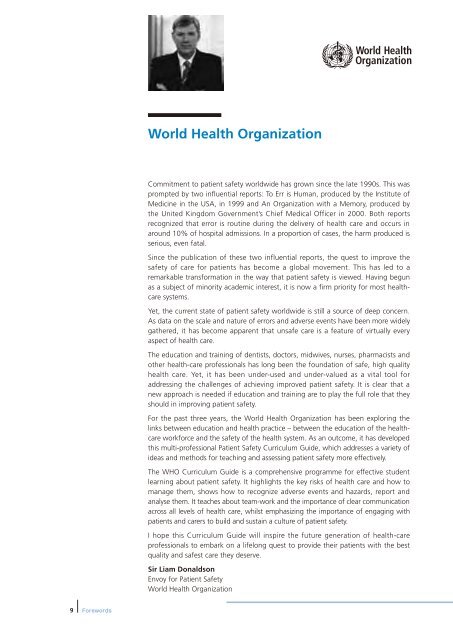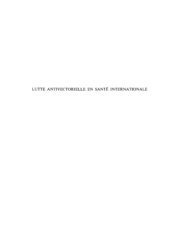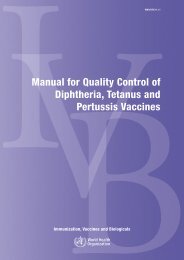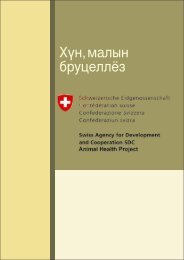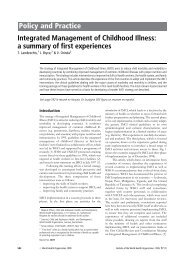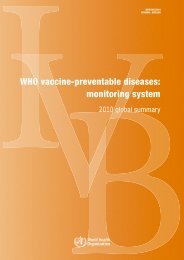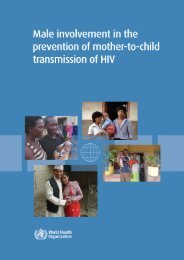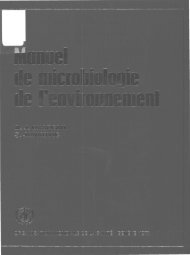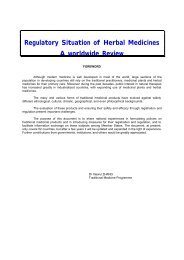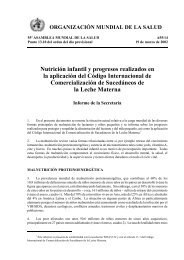WHO Patient Safety Curriculum Guide - Extranet Systems - World ...
WHO Patient Safety Curriculum Guide - Extranet Systems - World ...
WHO Patient Safety Curriculum Guide - Extranet Systems - World ...
You also want an ePaper? Increase the reach of your titles
YUMPU automatically turns print PDFs into web optimized ePapers that Google loves.
<strong>World</strong> Health Organization<br />
Commitment to patient safety worldwide has grown since the late 1990s. This was<br />
prompted by two influential reports: To Err is Human, produced by the Institute of<br />
Medicine in the USA, in 1999 and An Organization with a Memory, produced by<br />
the United Kingdom Government’s Chief Medical Officer in 2000. Both reports<br />
recognized that error is routine during the delivery of health care and occurs in<br />
around 10% of hospital admissions. In a proportion of cases, the harm produced is<br />
serious, even fatal.<br />
Since the publication of these two influential reports, the quest to improve the<br />
safety of care for patients has become a global movement. This has led to a<br />
remarkable transformation in the way that patient safety is viewed. Having begun<br />
as a subject of minority academic interest, it is now a firm priority for most healthcare<br />
systems.<br />
Yet, the current state of patient safety worldwide is still a source of deep concern.<br />
As data on the scale and nature of errors and adverse events have been more widely<br />
gathered, it has become apparent that unsafe care is a feature of virtually every<br />
aspect of health care.<br />
The education and training of dentists, doctors, midwives, nurses, pharmacists and<br />
other health-care professionals has long been the foundation of safe, high quality<br />
health care. Yet, it has been under-used and under-valued as a vital tool for<br />
addressing the challenges of achieving improved patient safety. It is clear that a<br />
new approach is needed if education and training are to play the full role that they<br />
should in improving patient safety.<br />
For the past three years, the <strong>World</strong> Health Organization has been exploring the<br />
links between education and health practice – between the education of the healthcare<br />
workforce and the safety of the health system. As an outcome, it has developed<br />
this multi-professional <strong>Patient</strong> <strong>Safety</strong> <strong>Curriculum</strong> <strong>Guide</strong>, which addresses a variety of<br />
ideas and methods for teaching and assessing patient safety more effectively.<br />
The <strong>WHO</strong> <strong>Curriculum</strong> <strong>Guide</strong> is a comprehensive programme for effective student<br />
learning about patient safety. It highlights the key risks of health care and how to<br />
manage them, shows how to recognize adverse events and hazards, report and<br />
analyse them. It teaches about team-work and the importance of clear communication<br />
across all levels of health care, whilst emphasizing the importance of engaging with<br />
patients and carers to build and sustain a culture of patient safety.<br />
I hope this <strong>Curriculum</strong> <strong>Guide</strong> will inspire the future generation of health-care<br />
professionals to embark on a lifelong quest to provide their patients with the best<br />
quality and safest care they deserve.<br />
Sir Liam Donaldson<br />
Envoy for <strong>Patient</strong> <strong>Safety</strong><br />
<strong>World</strong> Health Organization<br />
9 Forewords


